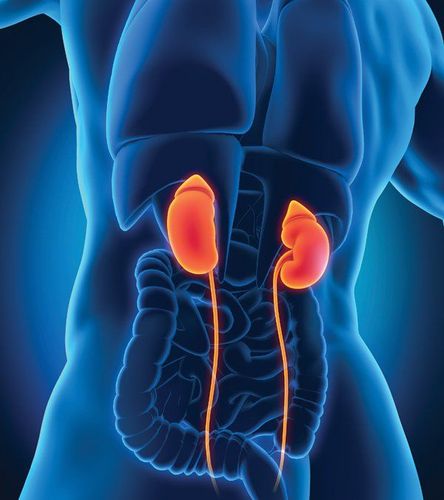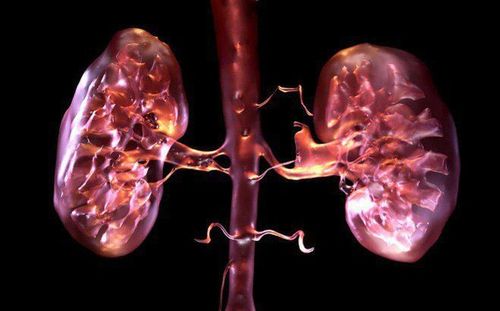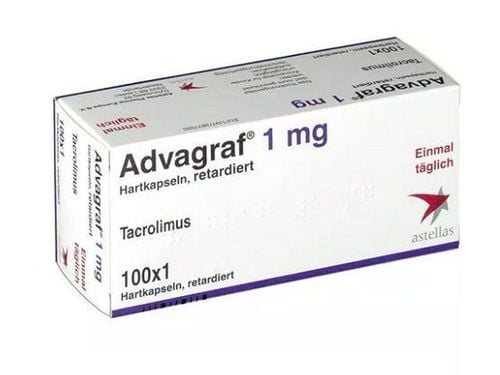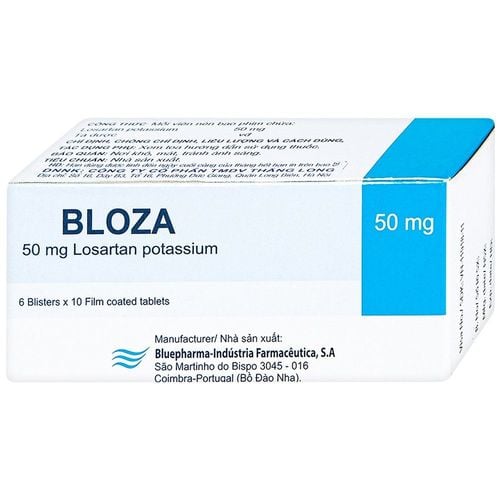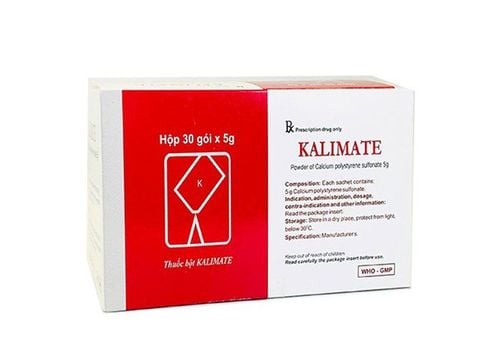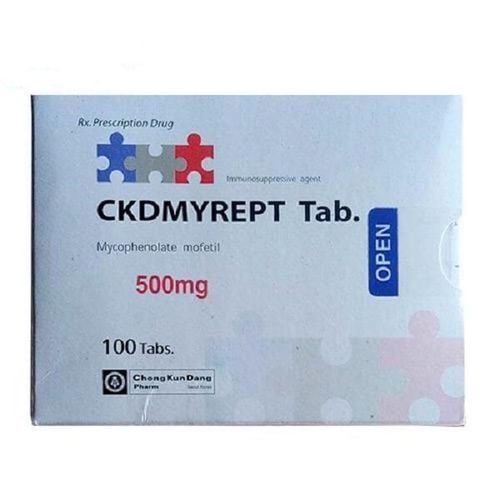This is an automatically translated article.
The article was professionally consulted by Specialist Doctor I Nguyen Hung - Department of Medical Examination & Internal Medicine - Vinmec Danang International Hospital. With over 36 years of experience in the profession, the doctor has experience in treating endocrine - diabetes and kidney diseases.End-stage chronic renal failure is the most severe stage of chronic kidney disease manifested by uremia syndrome, the patient will die if not treated promptly. The most common treatment options for end-stage chronic kidney disease are peritoneal dialysis, kidney transplantation, and hemodialysis.
1. End stage chronic kidney failure
1.1 What is chronic kidney failure? Chronic renal failure is a chronic irreversible decline in kidney function over a period of many months or years, due to irreversible damage to the number and function of nephrons.Based on the glomerular filtration rate (GFR), chronic kidney failure is divided into 5 stages as follows:
1.2 End-stage chronic renal failure End-stage chronic renal failure is the 5th stage according to the classification of stages of chronic renal failure, also the most severe stage of the disease with glomerular filtration rate <15 ml/min/ 1.73 m2 of leather. This stage is manifested by uremia syndrome, which is a syndrome caused not only by an increase in serum urea, but also by an increase in more than 100 other nitrogen-derived products in the blood such as peptides, creatinine, amino acids. ,.. This is a dangerous condition, the patient will die without renal replacement therapy
The leading causes of end-stage chronic kidney failure are: diabetes mellitus, hypertension and glomerulonephritis. kidney. Diabetes is the predominant cause in developed countries, while glomerular disease is the leading cause, accounting for 30-40% of cases of end-stage CKD in developing countries.
2. Treatment options for end-stage chronic kidney disease
2.1 Targets for treatment of end-stage chronic renal failure Prepare replacement therapy for severe renal impairment Adjust dose in patients with renal impairment Treat complications of uraemic syndrome such as anemia, hypertension pressure, malnutrition, calcium-phosphorus metabolism disorders, electrolyte disturbances. Treatment of cardiovascular complications and other risk factors 2.2 Indication for renal replacement therapy Except in case the patient refuses treatment, remaining all patients with end-stage chronic renal failure with clinical symptoms of the syndrome of high blood urea (usually occurs when creatinine clearance <15ml/min or earlier in the case of diabetes) are indicated for renal replacement therapy.Possible forms of renal replacement therapy include:
Hemodialysis (HD) Peritoneal dialysis (PD) Kidney transplantation.
3. Kidney transplant

Advantages: After a kidney transplant, the patient can live and do normal activities.
Disadvantages:
Difficult to find a suitable kidney, High cost of transplantation and maintenance treatment, Risks of rejection and infection In addition, not all patients are suitable for kidney transplantation. Relative contraindications for kidney transplantation are:
Patients at high risk of rejection, positive donor and recipient cross-mathch. The patient's health does not allow for the operation. Patients with hepatitis C, biliary tract infections, tuberculosis,... Patients with terminal cancer, severe heart failure, decompensated cirrhosis,...
4. Peritoneal dialysis
Peritoneal dialysis (also known as peritoneal dialysis) is a method that uses the patient's own membrane as a membrane to filter metabolites and electrolytes out of the body, helping to maintain homeostasis to replace kidney function. has weakened.In peritoneal dialysis, a fixed catheter or catheter is inserted into the abdomen to introduce dialysis fluid, which helps absorb waste products and toxins from the blood. After a while, these filtrates are drained and replaced with new filtrate. Acute peritoneal dialysis is often used in the indications for dialysis in acute renal failure when an artificial kidney is not available or the patient has a contraindication to hemodialysis. Peritoneal dialysis in the treatment of chronic renal failure includes two forms:
Continuous peritoneal outpatient dialysis (CAPD): The peritoneal dialysis is performed continuously for 24 hours, all days of the week. The patient will change the filtrate 4-5 times/day. Automated peritoneal dialysis (ADP): The dialysis is done at home with the help of a cycler, which exchanges the filtrate during sleep. The machine will automatically change the fluid in a cycle 4-5 times / night, the new change in the morning will be kept in the abdomen. The advantages of peritoneal dialysis methods are that patients can still maintain normal activities such as kidney transplantation, good quality dialysis, low cost, stable blood pressure, low mortality in the first 3 years.
Cases in which patients cannot perform peritoneal dialysis:
Absolute contraindications: complete loss of peritoneal function, peritoneal scarring with adhesions that prevent dialysis fluid from draining, filtrate leaking to the diaphragm, no one to help change the filtrate. Relative contraindications: recent abdominal aorta surgery, intolerance to intra-abdominal fluid, severe malnutrition, obesity, skin infections, intestinal diseases such as appendicitis, enteritis, etc. .
5. Artificial kidney

Hemodialysis in the indication for dialysis in acute renal failure helps to reduce the death rate of patients with acute renal failure from 70-80% before to about 10%, patients with end-stage chronic renal failure longer life and better quality of life.
Hemodialysis in chronic renal failure is usually done three times per week for a minimum of four hours, usually in hospitals or dialysis centers.
Artificial kidney is contraindicated in the following patients: there is no blood line for dialysis, patients with severe cardiovascular disease, heart failure, myocardial infarction, patients with coagulation disorders, ..
Early detection of kidney failure plays an important role in the treatment outcome, so the diagnosis has special significance. Renal function scintigraphy is routinely applied at the Nuclear Medicine Unit, Vinmec Hospital. This is a technique to evaluate kidney function using modern high-precision measuring equipment and radioactive tracer. With good quality images, functional renal scintigraphy has become an indispensable technique to probe kidney function, contributing to improving the efficiency of diagnosis and treatment of kidney and urinary tract diseases.
Currently, International General Hospital uses the SPECT/CT Discovery NM/CT 670 Pro device system, with the most modern 16-series CT of the world's leading medical equipment company GE Healthcare (USA), for imaging High quality images help to diagnose diseases to be investigated early.
A team of experienced Vinmec doctors, well-trained at home and abroad, directly advise and provide maximum support to customers during the shooting process, even for foreign customers. .
Please dial HOTLINE for more information or register for an appointment HERE. Download MyVinmec app to make appointments faster and to manage your bookings easily.





